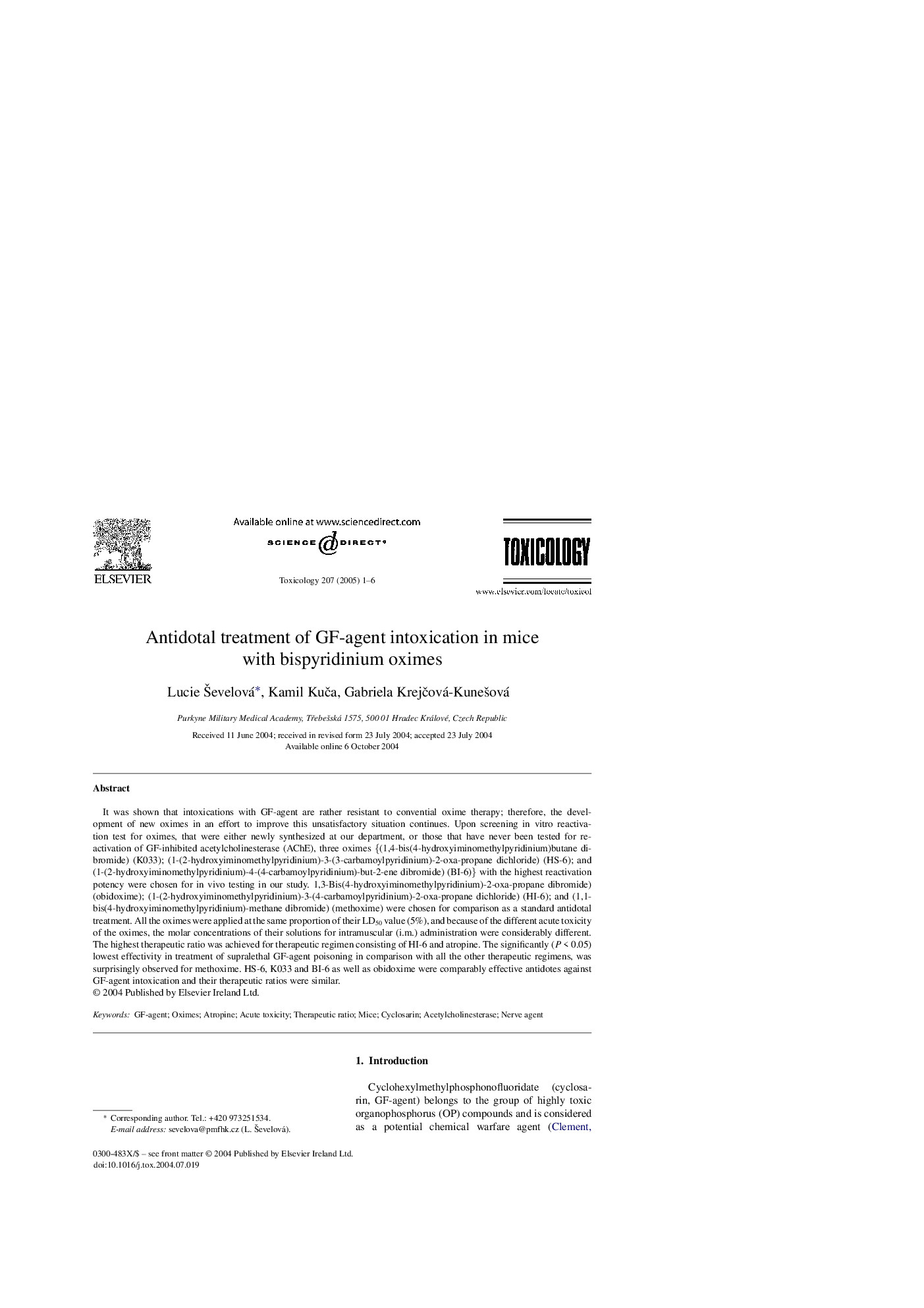| Article ID | Journal | Published Year | Pages | File Type |
|---|---|---|---|---|
| 9034498 | Toxicology | 2005 | 6 Pages |
Abstract
It was shown that intoxications with GF-agent are rather resistant to convential oxime therapy; therefore, the development of new oximes in an effort to improve this unsatisfactory situation continues. Upon screening in vitro reactivation test for oximes, that were either newly synthesized at our department, or those that have never been tested for reactivation of GF-inhibited acetylcholinesterase (AChE), three oximes {(1,4-bis(4-hydroxyiminomethylpyridinium)butane dibromide) (K033); (1-(2-hydroxyiminomethylpyridinium)-3-(3-carbamoylpyridinium)-2-oxa-propane dichloride) (HS-6); and (1-(2-hydroxyiminomethylpyridinium)-4-(4-carbamoylpyridinium)-but-2-ene dibromide) (BI-6)} with the highest reactivation potency were chosen for in vivo testing in our study. 1,3-Bis(4-hydroxyiminomethylpyridinium)-2-oxa-propane dibromide) (obidoxime); (1-(2-hydroxyiminomethylpyridinium)-3-(4-carbamoylpyridinium)-2-oxa-propane dichloride) (HI-6); and (1,1-bis(4-hydroxyiminomethylpyridinium)-methane dibromide) (methoxime) were chosen for comparison as a standard antidotal treatment. All the oximes were applied at the same proportion of their LD50 value (5%), and because of the different acute toxicity of the oximes, the molar concentrations of their solutions for intramuscular (i.m.) administration were considerably different. The highest therapeutic ratio was achieved for therapeutic regimen consisting of HI-6 and atropine. The significantly (P < 0.05) lowest effectivity in treatment of supralethal GF-agent poisoning in comparison with all the other therapeutic regimens, was surprisingly observed for methoxime. HS-6, K033 and BI-6 as well as obidoxime were comparably effective antidotes against GF-agent intoxication and their therapeutic ratios were similar.
Related Topics
Life Sciences
Environmental Science
Health, Toxicology and Mutagenesis
Authors
Lucie Å evelová, Kamil KuÄa, Gabriela KrejÄová-KuneÅ¡ová,
